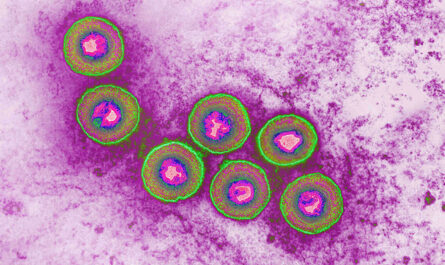A research team led by MedUni Vienna and LMU Munich has developed a groundbreaking framework for the standardized imaging of diffuse gliomas using amino acid PET. Diffuse gliomas are malignant brain tumors that are challenging to examine using conventional imaging techniques such as MRI. However, amino acid PET allows for better visualization of the activity and spread of these tumors. The RANO group, an international consortium, has established the first-ever international criteria for the standardized imaging of gliomas using amino acid PET. The findings of this pioneering work have been published in The Lancet Oncology.
The study was jointly led by Matthias Preusser, an oncologist from the Medical University of Vienna, and Nathalie Albert, a nuclear medicine specialist from LMU Munich. Tatjana-Traub Weidinger from the Department of Radiology and Nuclear Medicine at MedUni Vienna, and Maximilian Mair from the Division of Oncology, Department of Medicine I, were also actively involved in the research.
Diffuse gliomas are aggressive malignant brain tumors that develop from glial cells. Traditionally, these tumors have been difficult to treat, and their assessment using conventional imaging methods has been challenging. However, the RANO group has successfully established criteria that enable the evaluation of treatment response using positron emission tomography (PET). These PET-based criteria, known as PET RANO 1.0, provide new avenues for the standardized assessment of diffuse gliomas, according to Preusser. PET is an imaging technique that utilizes radioactively labeled substances to measure metabolic processes in the body. Amino acid PET imaging, specifically, is used in the diagnosis of diffuse gliomas, as the tracer of this technique works on a protein basis (amino acids) and accumulates in brain tumors.
Albert highlights the significance of PET imaging with radioactively labeled amino acids in the field of neuro-oncology, as it allows for reliable imaging of the activity and extent of gliomas. While amino acid PET has been utilized for years, it had not been evaluated systematically until now. Unlike MRI-based diagnostics, there were previously no standardized criteria for interpreting these PET images.
The newly established criteria will not only facilitate the use of PET in clinical trials and routine clinical practice but also create a foundation for future studies and the comparison of treatments, leading to improved therapeutic strategies, adds Preusser. These criteria are based on expert consensus and were developed by the Response Assessment in Neuro-Oncology (RANO) Working Group, an international consortium of multidisciplinary experts. For over a decade, this group has been developing standardized criteria to evaluate various clinically relevant aspects related to brain tumors.
The successful establishment of this framework for standardized imaging of gliomas using amino acid PET represents a significant advancement in the field of neuro-oncology. It promises to improve the diagnosis, treatment monitoring, and overall management of diffuse gliomas, leading to better patient outcomes in the future.
*Note:
1. Source: Coherent Market Insights, Public sources, Desk research
2. We have leveraged AI tools to mine information and compile it



